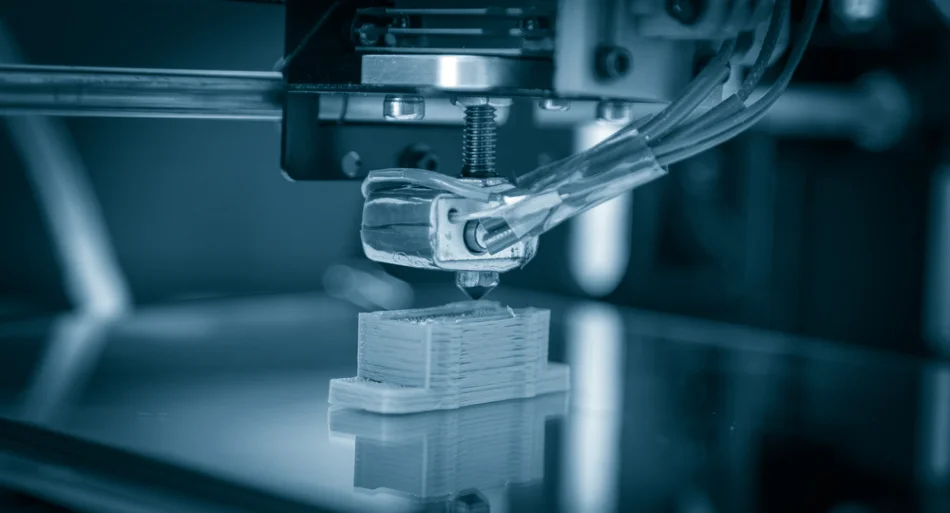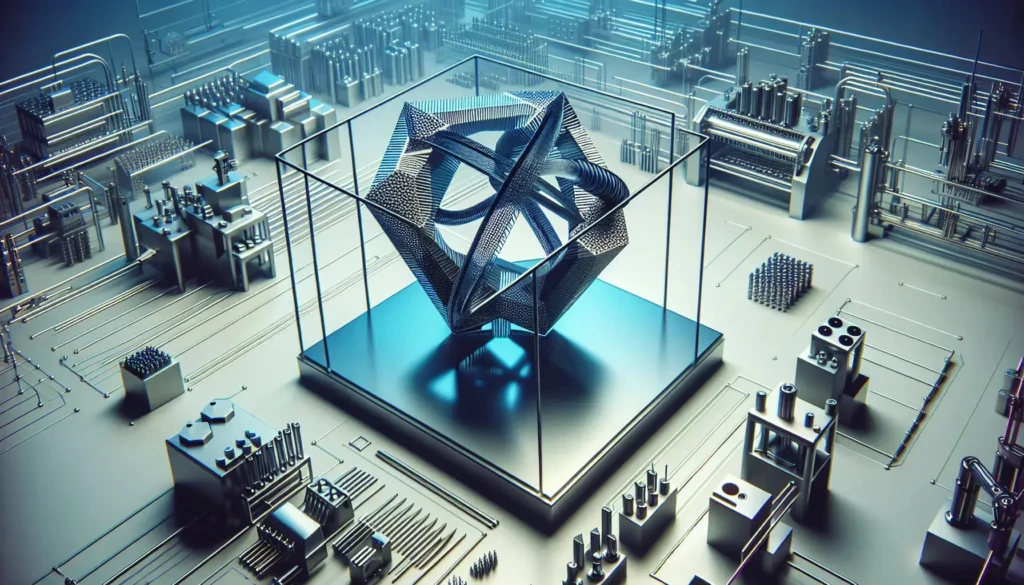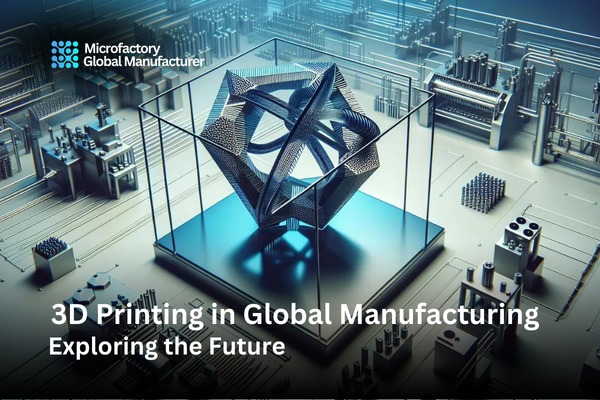The world of manufacturing is undergoing a radical transformation, thanks to the advent of 3D printing technology. What was once a niche process primarily used for prototyping has evolved into a cornerstone of modern manufacturing. This article delves into the future of 3D printing in global manufacturing, exploring its potential, the innovations on the horizon, and the challenges that lie ahead. We’ll take a close look at how this technology is set to reshape industries, enhance production processes, and drive sustainable practices.
The Rise of 3D Printing in Manufacturing
From Prototyping to Production
Initially, 3D printing, or additive manufacturing, was synonymous with rapid prototyping. Engineers and designers embraced it for its ability to quickly produce models and test designs without the need for expensive and time-consuming tooling. However, as technology advanced, so did its applications. Today, 3D printing is not just about prototyping; it’s about production.
Key Milestones
Several milestones have marked the journey of 3D printing from a mere curiosity to a game-changer in manufacturing:
- 1980s: Introduction of the first 3D printers using stereolithography.
- 1990s: Expansion into selective laser sintering (SLS) and fused deposition modeling (FDM).
- 2000s: Development of metal 3D printing techniques, broadening industrial applications.
- 2010s: Mainstream adoption in various industries, including aerospace, automotive, and healthcare.
- 2020s: Integration of AI and IoT, enhancing precision and connectivity.
Why It Matters
So, why is 3D printing such a big deal? For starters, it offers unprecedented flexibility in design and production. Manufacturers can produce complex geometries that were previously impossible or cost-prohibitive with traditional methods. This opens up new possibilities in product innovation and customization. Moreover, 3D printing reduces waste by using only the material necessary for the object, contributing to more sustainable manufacturing practices.
The Current Landscape
Industries Embracing 3D Printing
Several industries have already integrated 3D printing into their operations with significant success. Here are a few examples:
Aerospace
The aerospace industry was one of the early adopters of 3D printing, leveraging its ability to produce lightweight, high-strength components. Companies like Boeing and Airbus use 3D printing to manufacture parts that reduce aircraft weight and improve fuel efficiency.
Automotive
In the automotive sector, 3D printing is used for everything from prototyping new vehicle designs to producing end-use parts. Car manufacturers like BMW and Ford utilize 3D printing to accelerate development cycles and customize components.
Healthcare
Perhaps one of the most impactful applications of 3D printing is in healthcare. From custom prosthetics and implants to bioprinting tissues and organs, the potential for personalized medicine is enormous. Surgeons can even print patient-specific models to plan complex surgeries.
Consumer Goods
3D printing also shines in the consumer goods market, allowing for mass customization of products like footwear, eyewear, and jewelry. Brands like Adidas and Nike have introduced 3D-printed shoes, offering personalized fit and comfort.
Technological Advances
The rapid pace of technological advances is driving the adoption of 3D printing in manufacturing. Key developments include:
- Multi-material printing: The ability to print with multiple materials simultaneously, enabling the creation of complex, multi-functional components.
- Speed improvements: New techniques such as continuous liquid interface production (CLIP) and high-speed sintering (HSS) are drastically reducing print times.
- Material innovations: Development of new materials, including high-performance polymers, composites, and bio-based materials, expanding the range of applications.
- Integration with AI and IoT: Enhanced precision and real-time monitoring of the printing process through AI and IoT integration, improving quality control and reducing downtime.
Images of Exploring the Future of 3D Printing in Global Manufacturing


The Future of 3D Printing
Trends to Watch
As we explore the future of 3D printing in global manufacturing, several trends stand out. These trends are set to shape the next decade of innovation and application:
Mass Customization
The demand for personalized products is growing, and 3D printing is uniquely positioned to meet this demand. Imagine a world where consumers can order products tailored to their exact specifications, from shoes that perfectly fit their feet to kitchen gadgets designed to their unique preferences. This level of customization could revolutionize retail and e-commerce.
Distributed Manufacturing
3D printing enables a shift from centralized to distributed manufacturing. Instead of mass-producing goods in a single location and shipping them worldwide, companies can produce items closer to the point of consumption. This reduces lead times, lowers transportation costs, and decreases the carbon footprint of manufacturing.
Sustainability and Circular Economy
Sustainability is a major concern for modern manufacturers. 3D printing can contribute to more sustainable practices by minimizing waste, utilizing recycled materials, and enabling the repair and refurbishment of products rather than disposal. This aligns well with the principles of the circular economy, where the focus is on keeping resources in use for as long as possible.
Advanced Materials
The development of new materials is crucial for expanding the capabilities of 3D printing. Researchers are working on bio-compatible materials for medical applications, high-strength alloys for aerospace, and conductive materials for electronics. These innovations will open up new frontiers for what can be achieved with additive manufacturing.
Challenges Ahead
Despite its tremendous potential, 3D printing faces several challenges that must be addressed to fully realize its future impact on global manufacturing.
Cost and Accessibility
While the cost of 3D printers and materials has decreased significantly, it remains a barrier for widespread adoption, especially for small and medium-sized enterprises (SMEs). Additionally, there is a need for more affordable, high-quality materials to make 3D printing accessible to a broader range of industries.
Quality and Consistency
Achieving consistent quality in 3D-printed products is another challenge. Variability in material properties and print conditions can lead to defects and reduced reliability. Ongoing research and development are focused on improving quality control measures and developing standards for 3D-printed parts.
Skill Gap
The skill gap is a significant hurdle. The design and operation of 3D printers require specialized knowledge and expertise. Training and education programs are essential to equip the workforce with the skills needed to leverage this technology effectively.
Regulatory and Intellectual Property Issues
Regulatory frameworks and intellectual property (IP) protections must evolve to keep pace with the advancements in 3D printing. Ensuring the safety and reliability of 3D-printed products, especially in critical industries like healthcare and aerospace, is paramount. Additionally, addressing IP concerns related to the replication of patented designs is crucial.
FAQs
What is 3D printing?
3D printing, also known as additive manufacturing, is a process of creating three-dimensional objects from a digital file by layering materials on top of each other.
How is 3D printing used in manufacturing?
3D printing is used in manufacturing for prototyping, producing end-use parts, creating custom products, and reducing waste. It’s particularly valuable in industries like aerospace, automotive, healthcare, and consumer goods.
What are the benefits of 3D printing?
Benefits include design flexibility, reduced waste, shorter lead times, customization, and the ability to produce complex geometries that are difficult or impossible with traditional manufacturing methods.
What are the challenges of 3D printing in manufacturing?
Challenges include high costs, achieving consistent quality, addressing the skill gap, and navigating regulatory and IP issues.
What is the future of 3D printing in manufacturing?
The future of 3D printing in manufacturing involves trends like mass customization, distributed manufacturing, sustainability, and the development of advanced materials. Overcoming current challenges will be key to its continued growth and impact.
Conclusion
Exploring the future of 3D printing in global manufacturing reveals a landscape rich with possibilities. This technology is poised to revolutionize the way we produce goods, offering unparalleled flexibility, customization, and sustainability. However, realizing its full potential requires addressing existing challenges, such as cost, quality, skill gaps, and regulatory issues. As these hurdles are overcome, 3D printing will undoubtedly become a fundamental pillar of modern manufacturing, transforming industries and creating new opportunities for innovation and efficiency. The journey has just begun, and the future looks incredibly promising.


